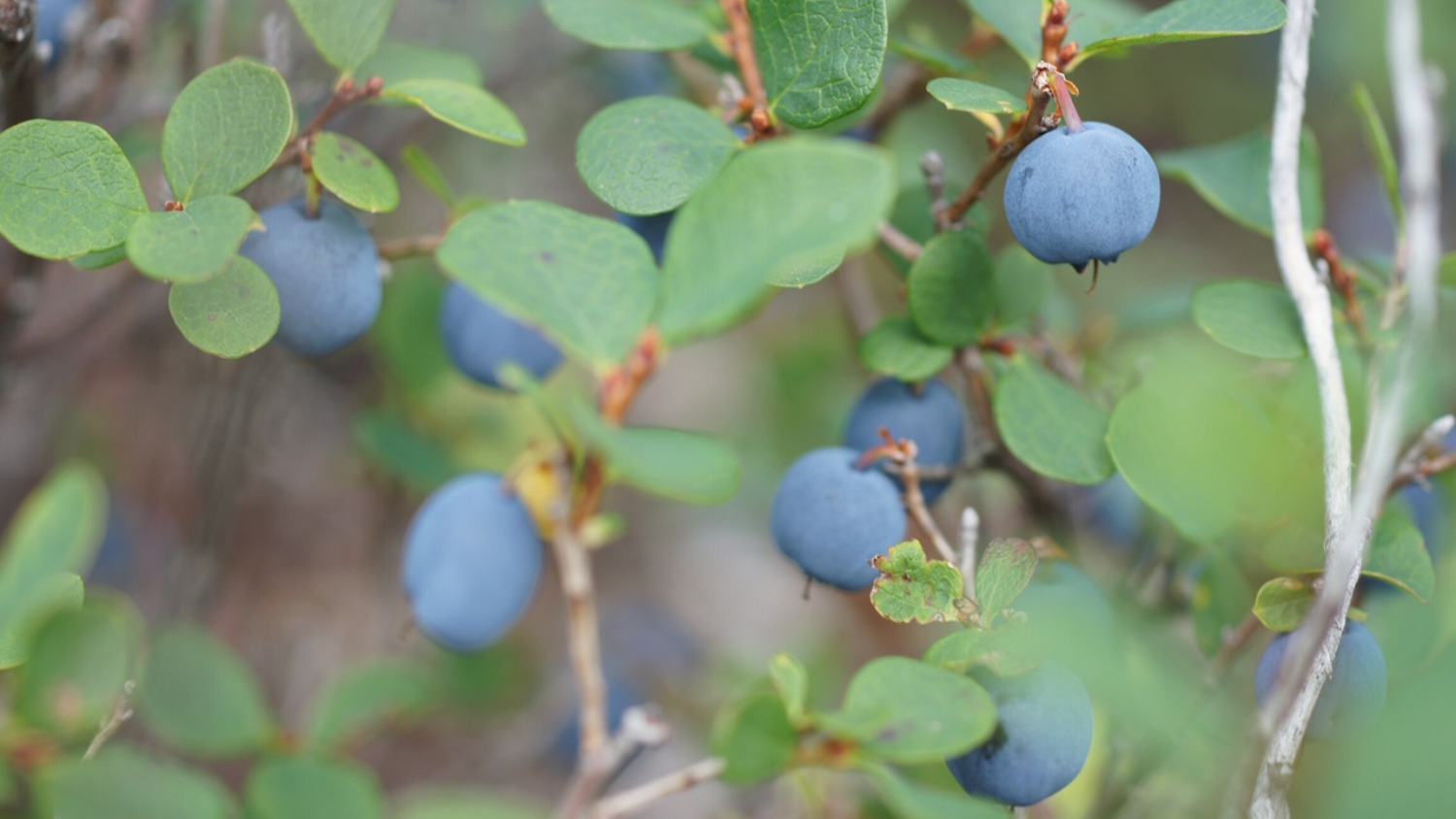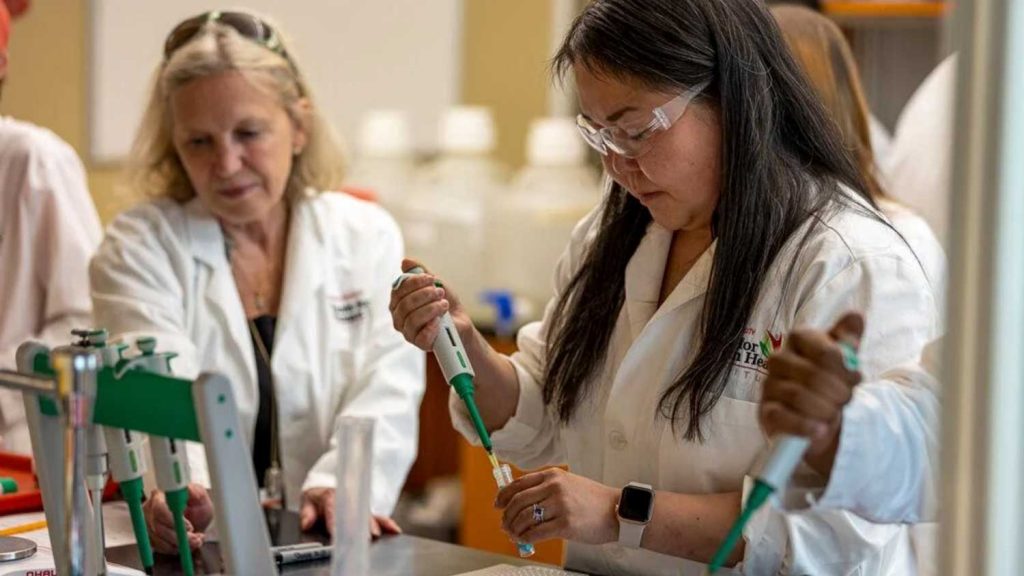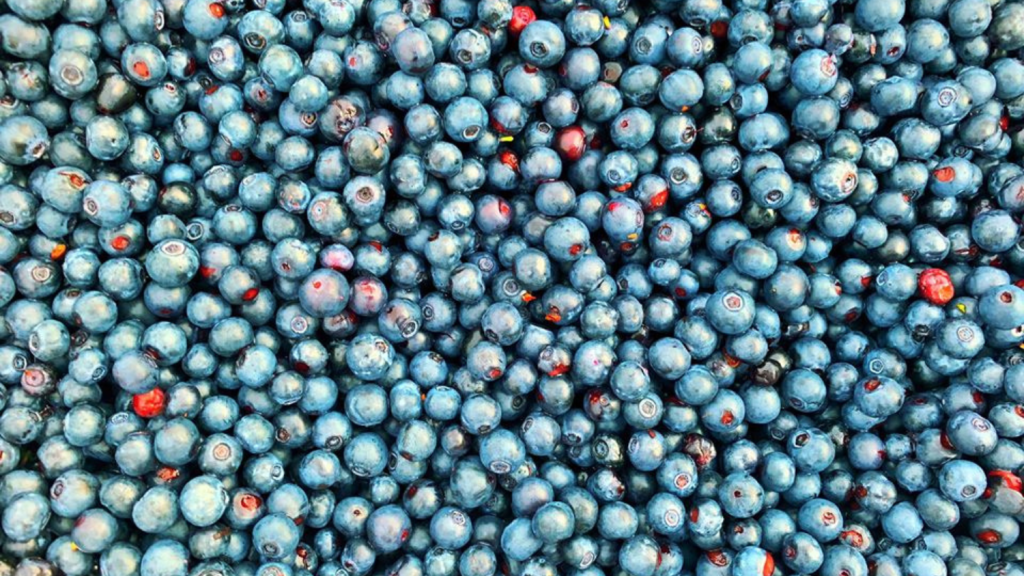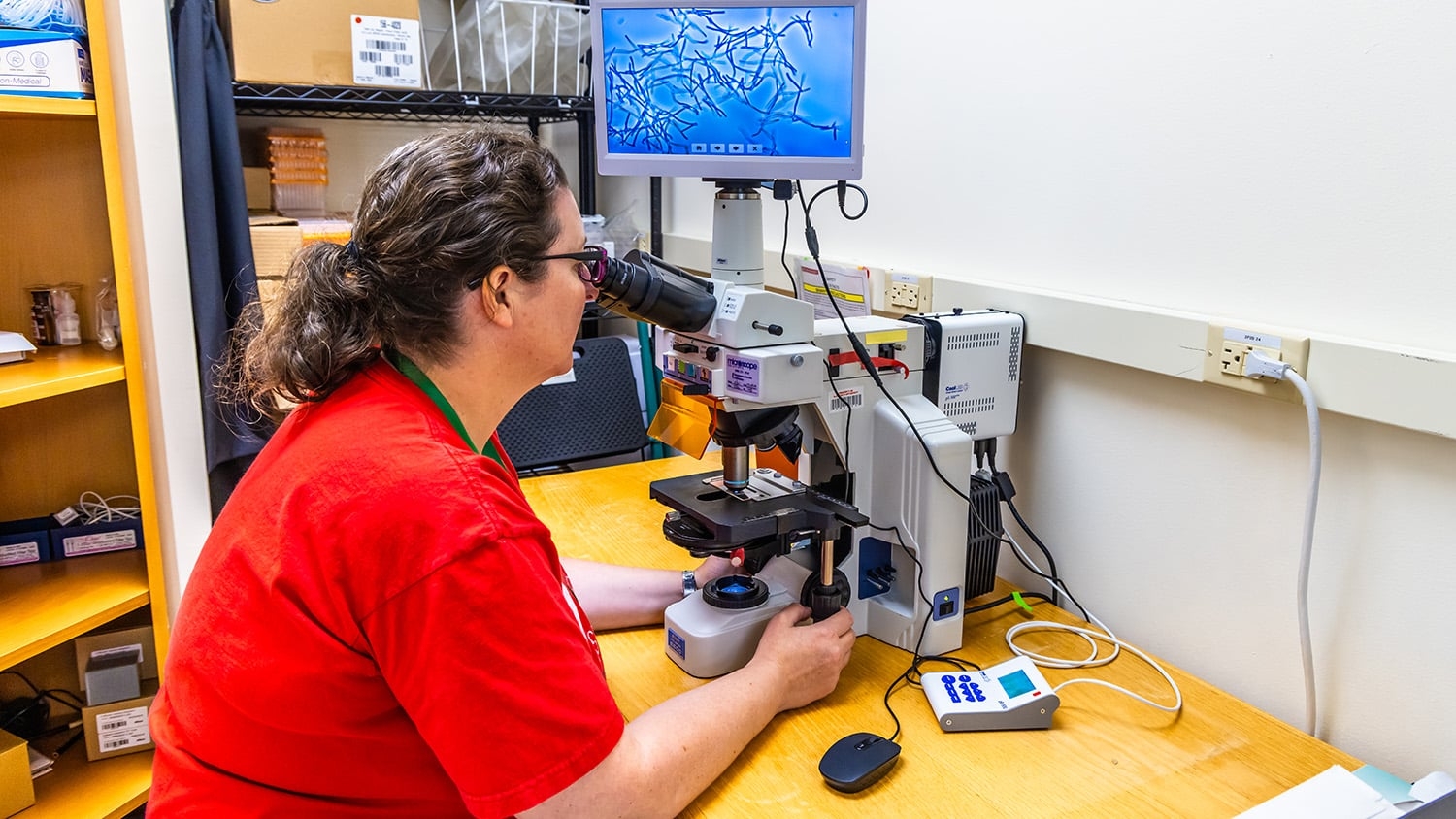Beneficial Berries

We’re always searching for the added health benefits of our favorite foods. Dark chocolate is a delicious dessert, but it’s also high in antioxidants. Popcorn, ideally enjoyed with a movie, is a whole grain that’s rich in fiber. Honey is a natural sweetener that is also known to reduce inflammation. Fruits and vegetables serve as refreshing summertime snacks, and also have their share of health benefits.
Mary Ann Lila, a David H. Murdock Distinguished Professor in the Department of Food, Bioprocessing and Nutrition Sciences and the director of the Plants for Human Health Institute (PHHI), is focused on understanding the health benefits that bioactive compounds found in some foods — particularly fruits and vegetables — provide when ingested. Lila is based at the North Carolina Research Campus in Kannapolis, North Carolina, a global research center for some of North Carolina’s universities, including NC State, for the discovery and translation of plant and food innovations for disease prevention and health benefits.
“I mostly study the smaller molecular compounds in plants that when you eat them or you put them on your skin, they will interact with human therapeutic targets to prevent chronic disease or to improve human metabolism,” says Lila.
In Alaska, she has a research project focused on understanding the health benefits that berries, specifically “bog blueberries,” which are only found in Alaska, provide. It’s known berries provide many health benefits, but Lila’s digging deeper to understand the why and how by studying sled dogs, who love the berries and reap their strong benefits.
As part of the project, she’s also engaging rural Alaskan communities and providing opportunities that wouldn’t normally be available to the locals. Some native students recently visited Lila’s lab in Kannapolis. While there, they participated in high-tech science, which they don’t have back home in their rural communities.

“We found that they adapted very well in the lab,” says Lila. “Most of them were really intrigued by the opportunities that are available in North Carolina.”
Climate Change and Alaskan Bog Berries
Lila’s work in Alaska began over 20 years ago with a grant from the Environmental Protection Agency called “Alaska Native Resources Under the Cloud of Climate Change.”
Although they studied a wide range of native plants, Lila and her colleague, Kriya Dunlap, from the University of Alaska Fairbanks, were particularly interested in bog blueberries, which are known to provide many health benefits.
“There are blueberries, a form of cranberry, and a form of lingonberry all growing interspersed on the Alaska tundra,” explains Lila.
Historically, the bog blueberries didn’t usually get a chance to ripen each summer — which is the only time they can grow because of Alaska’s harsh climate — due to the occasional early frost. With climate change and warming temperatures, the berries have been growing each year and are plentiful.
“They have extremely cold winters, of course, in Alaska. But then during the summer, their ripening season is one month, that’s it,” says Lila. “During that ripening season, the photoperiod, or the amount of sunshine, is almost 24 hours. It’s extreme UV stress. A plant can’t just get up and walk away when it has stress. It has to just sit there and form chemicals to protect itself.”

After testing the plant’s bioactive properties, Lila and her team discovered those natural chemicals provide health benefits to humans.
“The same chemicals that the plant forms to protect itself, when they enter the human body, also protect the human body against the ravages of disease,” says Lila.
This knowledge wasn’t new to the Native Alaskan communities. For example, they knew bears would eat bog blueberries after a tussle because of their wound healing and antimicrobial properties. The team continues to engage the local communities in their research, including elders, who have always believed in the powers of plants, and children, so they could teach them these important lessons.
“The elders already knew that they were important berries, but we were providing the youth with evidence from Western medicine that these berries were important,” says Lila. “It’s kind of a follow-up on traditional observations and traditional knowledge, but now we’re showing why those animals naturally gravitate toward the berries.”
A Delicious Pre-Race Snack
Over the years, Lila’s research has transitioned to better prove how beneficial these berries are with a USDA grant. But instead of bioassays in the back of a pickup truck to test their bioactive properties, she and Dunlap now use Dunlap’s sled dogs as sentinels.
“We use sled dogs in Alaska because sled dogs traditionally eat what the people eat,” says Lila. “The Alaska Native people don’t have money to buy dog food, so they just give the dogs the scraps from their own table. And the dogs eat the berries like crazy.”

In addition, it is well known that when exercising in cold temperatures, your immune system is suppressed and you’re therefore more susceptible to diseases. This made racing sled dogs the perfect candidates to better understand why this happens, and how to prevent it.
The idea of the study was simple. The dogs would be fed the berries as part of their fuel before the race, which they love. Then they would participate in shorter races, and the researchers would compare the dogs’ blood markers before and after the race. Their results showed that the berries, as predicted, increased immune protection. They also found that the berries had anti-inflammatory properties and even increased the dogs’ performances, too. In addition, the researchers found that the dogs didn’t need to eat that many berries to receive the benefits. In fact, due to their potency, even a single berry proved beneficial to the dogs.
“We were surprised at how influential they were after just one serving because a lot of food that’s functional, that is good for your health, you have to eat it over a number of weeks or months before you really see a benefit,” says Lila. “But we were surprised with these berries that one supplementation with the berries before a race made a difference.”
A Two-Way Street of “Berry” Healthy Benefits
Humans can also eat bog blueberries, and they’re known to be quite delicious. However, the natural chemicals in ripe berries, including the more familiar blueberries, raspberries and strawberries we find in the grocery store, must be broken down before they enter circulation.
“When you eat them, they go all the way down to your gut and they get catabolized by bacteria in your microbiome,” says Lila. “The bacteria break them up into smaller active molecules, and those are the ones that get into your bloodstream. When they enter your bloodstream, they’re very active, and they will inhibit enzymes that might cause disease. They will fortify membranes. They’ll do a lot of good things for your body, depending on what the metabolite is.”
And just like the microbiome helps activate compounds found in berries, the berries also help the microbiome flourish, creating a two-way street of benefits.
“There are good bacteria and bad bacteria and when you eat blueberries, for example, the populations of the good bacteria rise and the populations of the pathogenic bacteria go down,” says Lila. “It actually improves the overall composition of the microbiome.”
Lila’s bog blueberry research has caught the interest of health-based companies who want to use them on a larger scale with both humans and dogs; however, Lila has advice for anyone who wants to improve their health in the meantime.
“All berries are wonderful and they should be a larger part of our diet,” says Lila.
This post was originally published in College of Agriculture and Life Sciences News.
- Categories:


